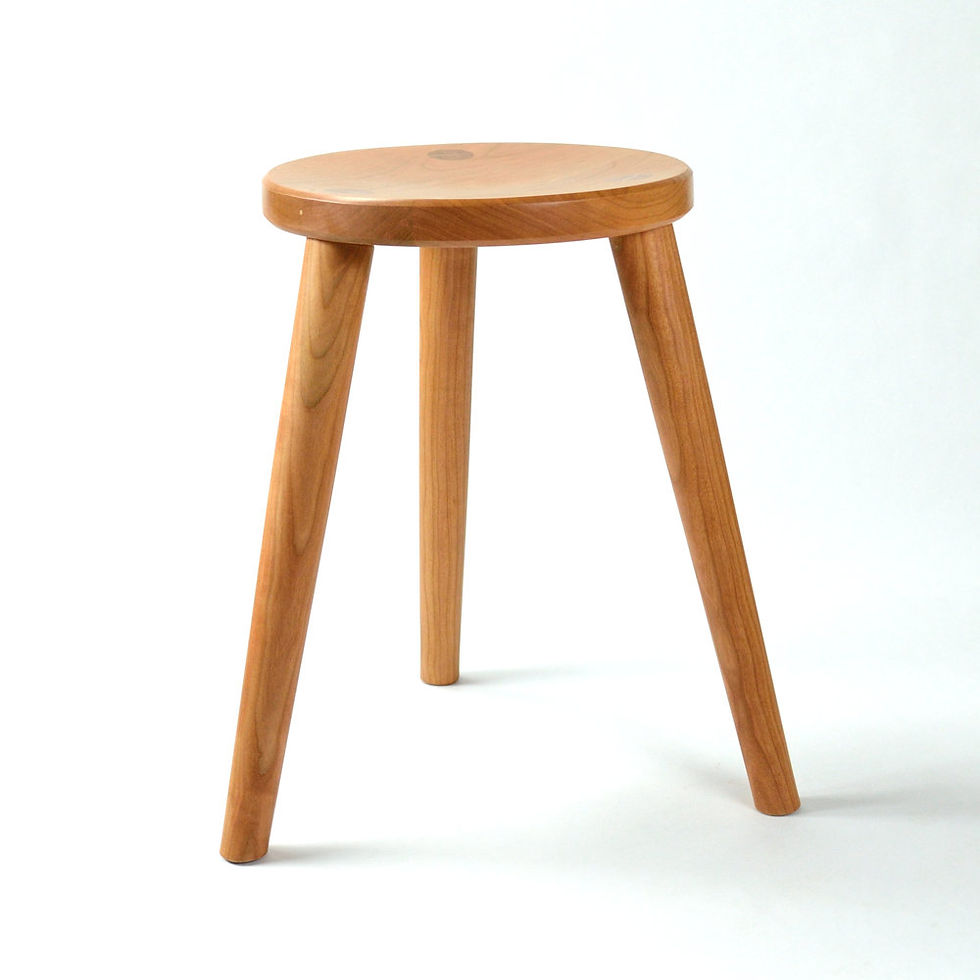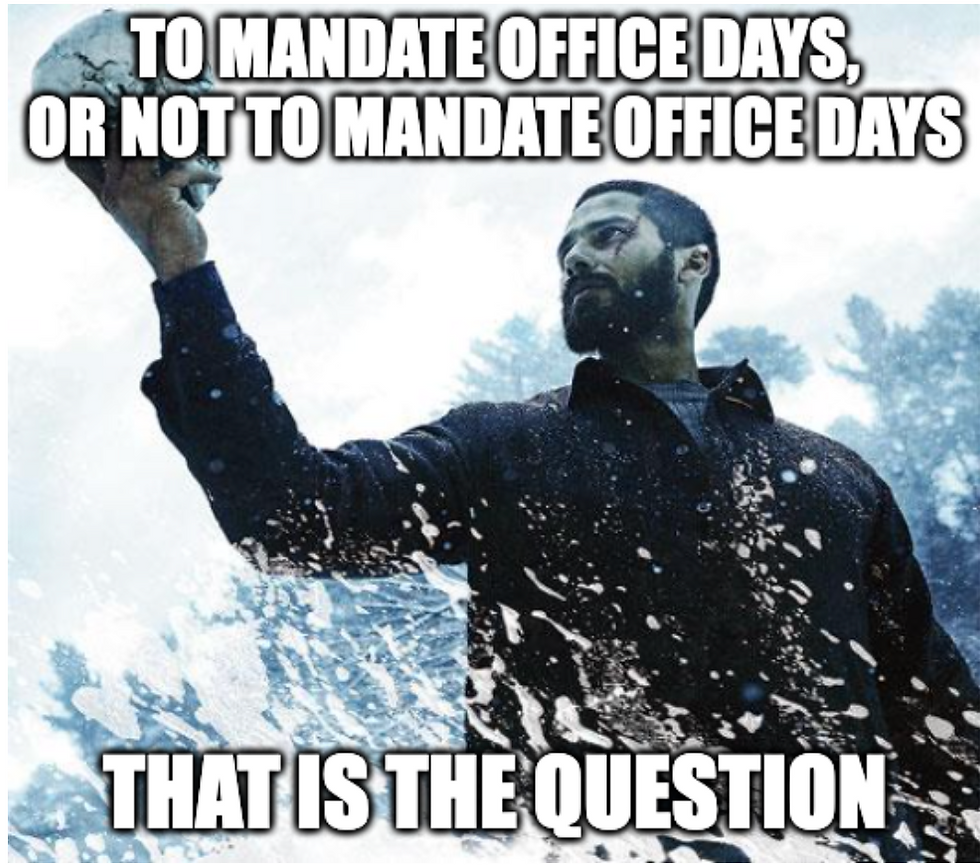
Sarah, a knowledge worker in a mid-sized Canadian company, is acutely aware that work has changed drastically over the past 3 years.
And it continues to change.
Sure, her organization is starting to figure out their return-to-office policies, ending long periods of uncertainty. She's settling in to hybrid working, like many of her peers.
But there is something rumbling under the surface.
"While the pandemic was disruptive for sure, it has also created a kind of ‘awakening’ for me," she says. "It made me re-think my priorities."
Work was already overwhelming before. And with fully virtual workdays, the blurred boundaries between her work and life got even more blurry. All of the anxiety on top of that wore out her ‘batteries’.
Sarah and her colleagues pivoted, they adapted, but it often took herculean efforts.
"We found ourselves examining our work/life balance - and the purpose of our jobs - more closely," she says. "At the same time, we were able to re-evaluate the importance of going to the office. And what we want to do there."
The long periods of being alone showed them how much human connection matters. There is consistent data showing that the main driver for returning to the office is to connect with others socially or to collaborate.

"A lot of organizations are just trying to get back to business as usual. But things have changed."
Sarah has been feeling less engaged for years. Looking to the future, she isn’t inspired. She’s worried she might not last long in her job. Yet she really believes in the mission and the great work her company does.
The Great Resignation seems to have slowed a bit, especially with the downturn in the economy. There’s a calming period happening now, but don’t be fooled: we aren’t done yet.
The ‘new normal’ of work is causing challenges for culture, cohesion, belonging, and connection - all major drivers of engagement.
The future of work needs to emphasize the human. Now, more than ever, you need to focus on the employee experience.
It's still evolving. You might think you can take your eye off that ball, but your people are still adjusting - and there are more adjustments coming.
From the work we’ve done over the last number of years, we’ve learned how you can lead the pack. Here’s how:
1. Find the Moments that Matter.
There are key moments in the core ‘work lifecycle’ that have been impacted by remote and hybrid working, like onboarding to a new organization or team, milestone recognition celebrations, and annual performance reviews.
But you need to go deeper and find out what day-to-day experiences really matter to your people - like launching a new project, team gatherings and chats, the accidental ‘collisions’ that used to happen, the ‘meeting after the meeting’ where a lot of the real conversations take place.
In organizations where customer focus is a big part of the strategy and culture, you should dig into where it is frustrating and challenging for your people to deliver that excellent customer experience you’re striving for. How do you match your employee and customer experience?
Run some engagement sessions with employees and frontline managers where you identify key moments and why they are important, get their insights on where there are brights spots and where there are barriers, and ideate some tactics together that might help.
When you apply an experience lens like this, you’ll see some clear moments that really matter to people bubble to the surface - and that’s where you need to put your efforts.
Pro tip: Clarifying the target employee experience isn’t enough - you have to establish measures. Your engagement survey will be one input, but it’s often too high level. Make sure you integrate more targeted measures into pulse checks and look for different perspectives e.g. if you are gathering data on things like office use and experience, also get data on the experience of remote workers. |
2. Integrate people, technology and workplace.
The employee experience drives culture - and vice versa. So of course people practices, learning, great leadership are all critical drivers, putting HR or People and Culture teams at the forefront.
But getting work done can be greatly enabled by well-designed workplaces. And we use technology every day to deliver results.
The biggest mistake you can make right now is not integrating People and Culture, Technology, and Real Estate in your approach. It's a three-legged stool.

A lot of organizations are struggling with adapting to the evolving world of work in large part because they are looking at only one or two of these - or allowing each of them to work independently.
But all three need to work in concert. They need to be at the table together to hear from people what it is that really matters to them, and what they need. They need to work together to create the vision.
And you need to create a visible place in the organization where they share accountability for keeping an eye to the future and delivering a magnetic employee experience and culture.
Pro Tip: This ‘three-legged stool' needs to be complimented with change management and communications. This is critical when you are transforming, but it’s also needed when the main transformation is done. Realizing the benefits of your investments in future of work will have a long tail of sustainment, which requires robust change management support. |
3. Tailor workplace rules to personas and teams.

This is probably the most controversial issue out there today, and the way you handle it - and any other rules related to hybrid working - will be crucial.
A lot of organizations are considering it an either/or proposition. The reasons vary: maybe there’s been a major investment in new offices during or just prior to the pandemic; or likely, there’s a real concern that teamwork and team cohesion is suffering.
These are true and valid reasons, but employees will most often perceive any blanket mandate as ‘leadership is concerned about productivity’.
If you are still figuring out your stance - or if you are continuing to refine it - here are some considerations.
Focus on the type of work and type of person: Rather than a blanket ‘presence minimum’, consider that there are different roles, and different ‘personas’ in your organization. What kind of roles are best suited to feed off the rest of the team, or be close to other key partners or customers? Which ones need more focus and independence? There might also be personal circumstances that drive different needs, they should figure into your personas as well.
Have teams set (and revisit) their norms: Encourage teams to talk about how they work together effectively, including when they should be together in-person. People want to come into the office when they know their team-mates are there at the same time. But given a lot of work will be hybrid, be explicit about what requires a meeting? What channels and technologies will you use to make decisions? To communicate and collaborate? This conversation is getting more complex and needs to keep evolving.
Establish some principles around ‘core activities’: Many organizations are adopting some key principles around ‘core moments’ where working in-person is best. Some examples are: brainstorming meetings, town halls, project planning, innovation and ideation workshops, learning, or coaching/development conversations.
More tailored approaches show people that you recognize what’s important to them. And if decisions have been made, you shouldn’t close the door on evolving your stance. Let it settle for a while, and learn from the impact on the experience.
Pro Tip: With more tailored rules, you’ll need to manage perceptions of ‘haves/have-nots’. With the right engagement and change management - and a spirit of experimentation - you can end up with rules that are more authentic, and that empower people to make work work for them. |
4. Be more prescriptive to drive better ways of working.

Most organizations have stopped providing guidance on how to get work done.
The theory is that people should be empowered, which is good. But that seems to also mean they can get work done anyway they see fit, that you just need to provide tools and people will use what suits them, that guidance on effective ways of working are patronizing, and so on.
But right now, people really do need guidance. For example:
Collaboration: it’s more and more important to collaborate and innovate together, both within teams and across business units (breaking down silos). However, most organizations don’t teach collaboration or innovation. And with hybrid teams, there are new etiquettes to be mindful of to ensure people feel included.
Technology: There are a whole host of new technologies to make work more effective, but we don’t tell people what technology tools work best for what kind of work - and spend time nudging them to use them. Technology can be really threatening to people, too (look out for the impact of AI) - we need to help them overcome that fear through exploration and learning.
Workplace: We design office spaces tailored for more ‘activity based work’, but we don’t spend a lot of time teaching people how to use them effectively, and helping them identify what kind of activities fit what kind of spaces to get the best results (and maintain a positive shared workplace).
Most people don’t have the time to digest all of the new ways of working, new technologies, and new workplace features, let alone apply more than a fraction of them to their job. Help them.
Providing guidance on how to get work done doesn’t have to encroach on empowerment.
Pro Tip: Direct people that are experts in technology, workplace design and collaboration to take a position and guide teams and individuals on best uses and practices. If you are going to have people share practices that are working for them, make sure to have at least a little moderating. |
5. Take a more active role in building human connection.
Creating the space for social time and human connection is no longer frivolous, it is a core component of culture and team building.
There’s always been a social component carved into the company calendar, although it’s sometimes viewed as wasting time when people socialize - and many companies are afraid of over-indexing on this and encouraging it too much.
But the social fabric is what holds people together at work.

It’s a huge component of the employee experience. And it’s well proven that when people are more closely connected, they are better at collaborating together, knowing each other better helps them navigate conflict better as a result, and the relationships they develop at work make work ‘stickier’ - ie, talent retention goes up.
Also, there often isn’t enough focus on building - and nurturing - connection in day-to-day teamwork. Leaders need to spend more time creating the opportunities for ‘off-topic’ discussions, chit chat, outings (if possible) - and actively encourage team members to connect informally, especially with remote workers (without forcing it of course). Leaders themselves should spend more time with remote workers as well.
The team norms discussions mentioned earlier are great forums to make sure the team not only focuses on how to work together, but how to connect with each other informally.
Pro Tip: When you are setting up day(s) for the team to be together at the office, don’t just make it back to back meetings. Make use of that time together - and try to engineer something social to strengthen bonds. Where teams are geographically distributed, and people in these offices are fractions of many teams, there is an opportunity to talk about work across teams and seeing how the dots connect. Plus, there is still belonging and community that adds a lot of value. |
Summing it up
The future of work is still evolving. You might think you can take your eye off that ball, but your people are still adjusting - and there are more adjustments coming.
But most importantly, you need to focus on making work more human.
There were huge gains made when organizations decided to focus on future of work during the pandemic and the transition to ‘a new normal’. Don't slow the pace now.
From the work we’ve done over the last number of years, you can lead the pack if you invest in:
Finding the moments that matter
Integrating People, Technology and Workplace
Tailoring workplace rules to personas and people
Being prescriptive to drive better ways of working
Taking a more active role in building human connection
If you enjoyed this issue, feel free to subscribe and/or reach out to us.
Thanks for reading. See you again next week!
We hope you enjoyed this newsletter. Whenever you're ready, there are more ways we can help you:
Run workshops with your team to help you define your Future of Work strategy, design employee experiences, and/or define a target culture.
Teach you how to facilitate powerful collaboration sessions with your team that yield results, fast.

Kommentare